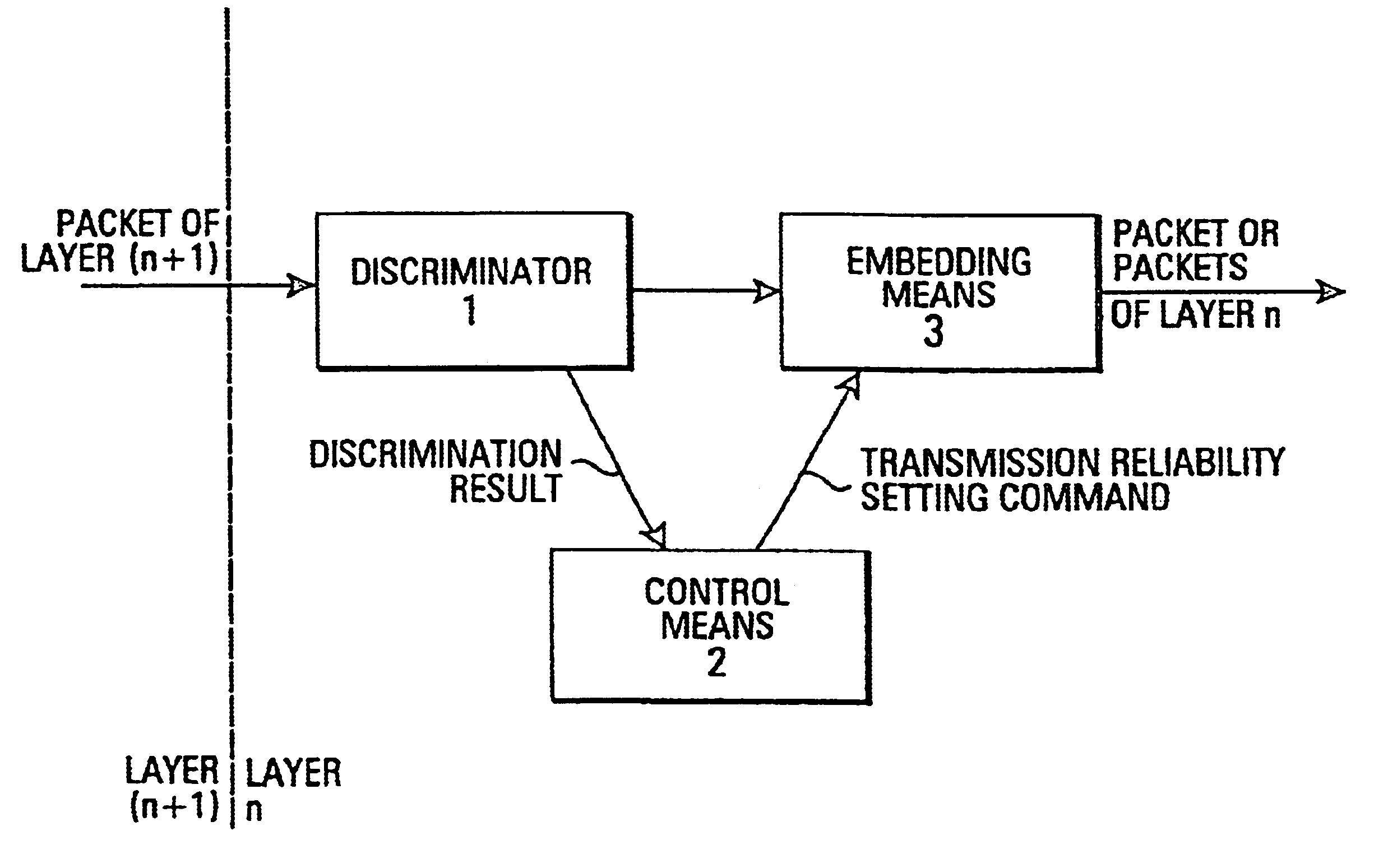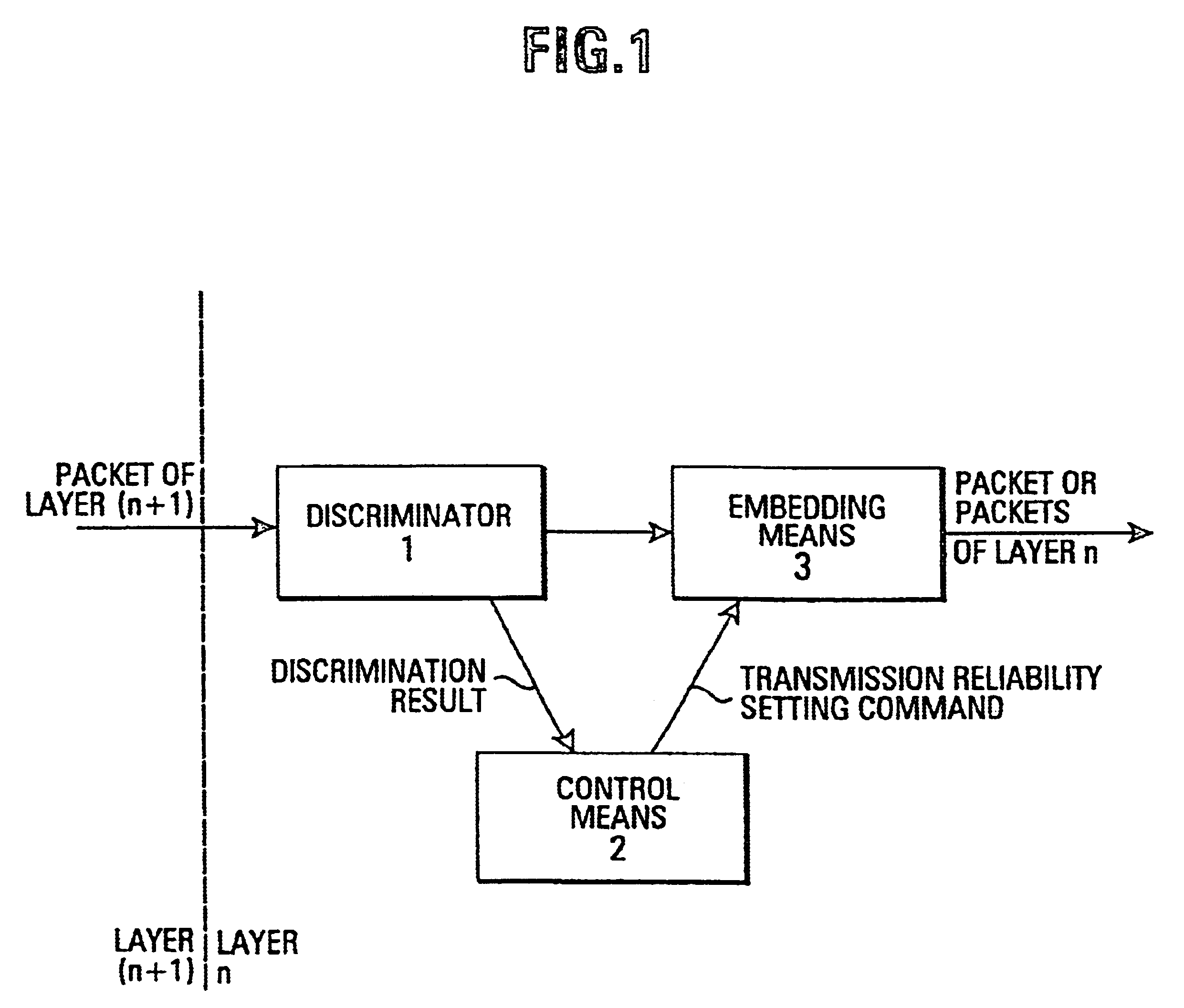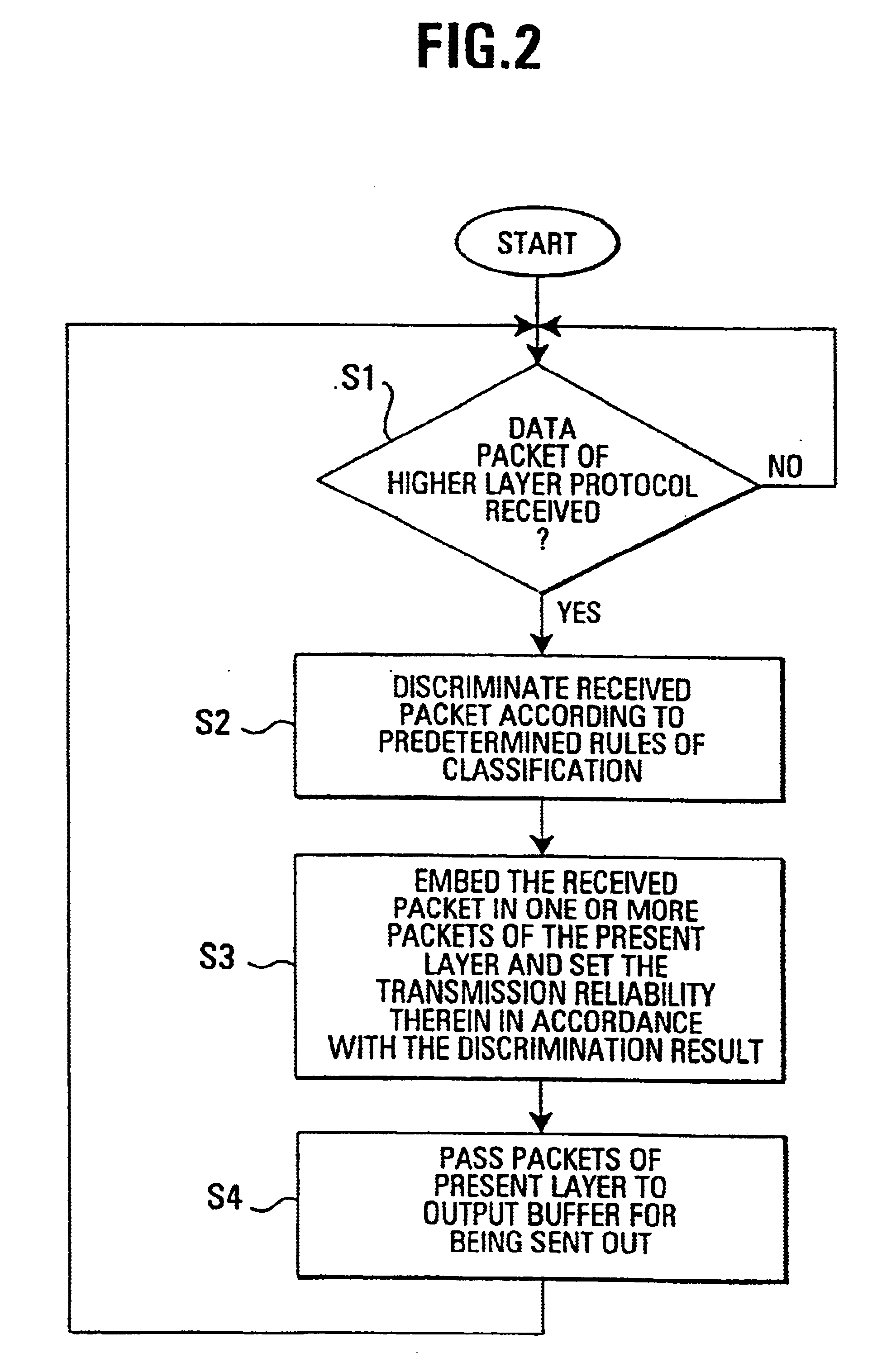Communication device and method
a communication device and communication method technology, applied in data switching networks, multiplex communication, wireless communication, etc., can solve problems such as transmission reliability problems, unnumbered mode does not provide retransmission, and delay in total transmission tim
- Summary
- Abstract
- Description
- Claims
- Application Information
AI Technical Summary
Benefits of technology
Problems solved by technology
Method used
Image
Examples
Embodiment Construction
This object is solved by the device and method described in the independent claims, where a communication device is provided for generating data packets to be sent out having a first data structure determined by a first predetermined protocol, which is arranged to receive data packets of a second structure determined by a predetermined second protocol and generating said data packets of said first structure by embedding each data packet of said second structure in one or more data packets of said first structure, and which comprises a discriminator means that is arranged to discriminate said data packet of said second structure according to predetermined rules, on the basis of the contents of said data packets of said second structure.
Advantageous embodiments are described in the dependent claims.
According to the present invention, the implementation of a protocol is made sensitive to the type of data being sent, so that the setting of parameters relevant for the transmission can be...
PUM
 Login to View More
Login to View More Abstract
Description
Claims
Application Information
 Login to View More
Login to View More - R&D
- Intellectual Property
- Life Sciences
- Materials
- Tech Scout
- Unparalleled Data Quality
- Higher Quality Content
- 60% Fewer Hallucinations
Browse by: Latest US Patents, China's latest patents, Technical Efficacy Thesaurus, Application Domain, Technology Topic, Popular Technical Reports.
© 2025 PatSnap. All rights reserved.Legal|Privacy policy|Modern Slavery Act Transparency Statement|Sitemap|About US| Contact US: help@patsnap.com



